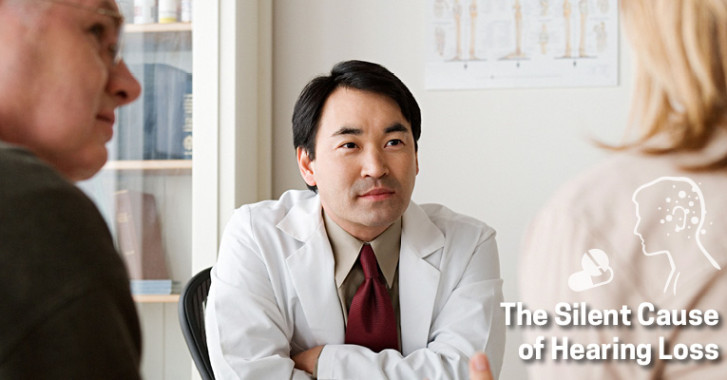Could Ototoxic Drugs Be Affecting Your Hearing Without Your Knowledge?

What Is Ototoxicity?
The definition of ototoxicity, in its simplest form, is ear poisoning (“oto” references the ear and toxicity references “poisoning”). Chemicals, drugs, and other agents that are known to cause hearing loss, balance disorders, or tinnitus are referred to as ototoxic. Damage to the auditory system can occur when the vestibulo-cochlear nerve, which sends balance and hearing information to the brain from the inner ear, is exposed to certain drugs or chemicals.
What Causes Ototoxicity?
Ototoxic drugs or agents can be ingested, inhaled, or absorbed through the skin. Today, there are more than 200 known ototoxic medications on the market today. These include medicines used to treat serious infections, cancer, and heart disease. Some common medications known to cause temporary damage to sensory cells in the inner ear are aspirin, quinine (to treat malaria), and loop diuretics (to treat specific hearing and kidney conditions). Organic solvents (a chemical class of compounds that are typically used in commercial industries) are the most commonly identified ototoxic chemicals. The list of chemical agents in the form of gases, paints, metals, and pesticides is impressive: High-priority ototoxins present immediate danger in certain elemental forms. Toluene, xylenes, styrenes, n-hexane, trichloroethylene, carbon monoxide, and alcohols are all considered high priority, and workers should avoid exposure to any and all relative products.
Pregnant women may be at risk of exposing their unborn child to substances harmful to the child’s hearing. During pregnancy, drugs such as Accutane, Dilantin, alcohol, and those used in chemotherapy can affect the fetus ototoxically. After birth, a child’s exposure to certain aminoglycoside antibiotics, diuretics, cisplatin, and other ototoxic agents may put them at risk for hearing loss.
Activities where chemicals are absorbed by the body while the ears are exposed to dangerous levels of noise may increase the risk of ototoxicity (think boat building, construction, firefighting, painting, and firing weapons). Other chemicals associated with hearing loss are benzene, carbon disulfide, carbon monoxide, ethylbenzene, hydrogen cyanide, lead, and mercury; some of these are found in organic solvents that are widely used for a variety of commercial and recreational projects. Many of the following are used in products that present simultaneous noise and chemical hazards:
- Automotive and aviation fuels
- Plastics
- Paint thinners
- Lacquers
- Dyes
- Detergents
- Medicines
- Perfumes
- Fabric and paper coatings
- Printing inks
- Spray surface coatings
- Insect repellents
What Can I Do to Protect Myself?
To protect yourself from both chemical-induced hearing loss (CIHL) and noise-induced hearing loss (NIHL), or the combined effects from a mixture of the two, by:
- Removing hazardous substances or noises from the workplace
- Using less hazardous chemicals to perform duties
- Initiating steps to minimize exposure through inhalation, ingestion, skin absorption, and sound
- Adding ventilation and skin, respiratory, and hearing protection
- Create a hearing-conservation program that considers and monitors the combined effects of exposure to solvents and noise
If you are prescribed drugs that are ototoxic, do not stop taking them. If your provider is monitoring your hearing status, he or she will be better able to advise you on the risks of the medication and provide appropriate management.
If you or a friend has expressed concern over spinning, nausea, headaches, or hearing loss, ototoxicity may be the cause. Our office provides comprehensive solutions that can help keep our community healthy and happy. Thank you for working with us to improve the quality of life in our local community!

